
Navigate an unpredictable landscape with actionable, data-driven strategies tailored for your business from the brand down to the local level.
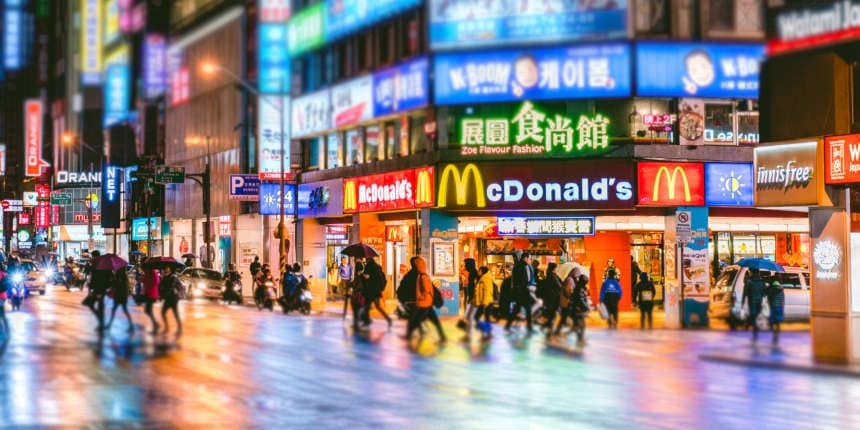
Playwright George Bernard Shaw once said that there is no sincerer love than the love of food. Judging by the steady growth of the global fast food market—with a compound annual growth rate of 5%, amounting to $188.4 billion between 2018 and 2022—our love for food is stronger than ever.
For many quick-service restaurants (QSRs), capitalising on this growth beyond the domestic market usually involves a strategy that is global in scale yet local in focus. In fact, the food industry is the prime example of “glocalisation” in its most fundamental form, with enterprise brands finding innovative answers to questions like:
With more than 14,000 locations in the US and another 14,000 locations internationally, Starbucks has become synonymous with coffee—and the casual café experience—all over the world. A large part of this success has been their ability to adapt to local markets and cultures.
Their expansion into China is a prime example of localisation done well. In fact, in a market that has traditionally been composed of tea drinkers, Starbucks is thriving and growing at an astronomical level with one store opening in China every 15 hours.
According to Forbes, Starbucks’ success in China can be attributed to their acknowledgement of local culture and traditions, while also taking advantage of China’s long-brewing interest in American coffee culture. For instance, while individualism is a defining concept of Western culture, community takes precedence in the Eastern world—so Starbucks saw a valuable opportunity when it noticed customers in China visiting their coffee shops in large groups. To accommodate this dynamic, Starbucks locations in China are now up to 40% larger than locations in the US.
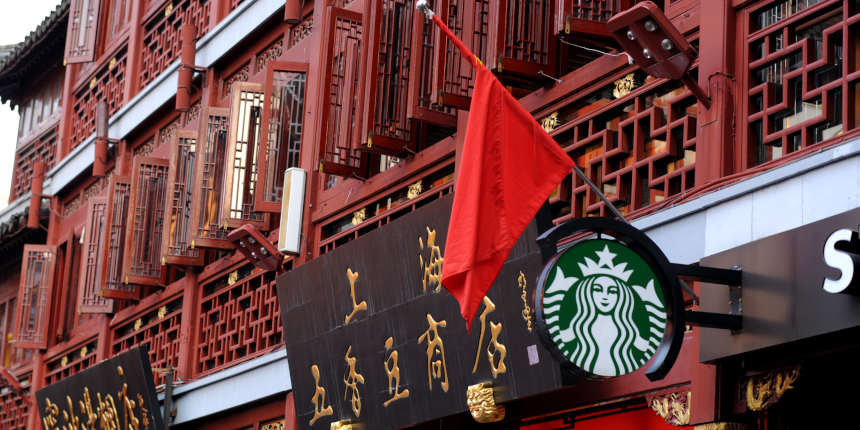
And store footprint isn’t the only thing that is larger in China—the prices are too. In fact, Starbucks China charges up to 20% more than its international counterparts, cementing its status as a premium brand. Why? Because status and reputation are important indicators of success in China, with conspicuous foreign brands often held in high regard. Starbucks capitalised by positioning itself as a premium brand, opening locations in high-end districts, grander metropolitan areas, and near iconic landmarks for higher visibility among the wealthy.
As a result, Starbucks has piqued the interest of its Chinese customers that seek an authentic American coffee experience while also respecting the values of Chinese culture, society, and traditions.
It’s no secret that North American staples like McDonald’s, KFC, and Dunkin’ Donuts offer exclusive menu options that are adapted to suit local tastes and portion sizing. For instance, McDonald’s staples in North America include the Quarter Pounder and Big Mac—but visit a McDonald’s in Japan and you’ll also find the Chicken Teriyaki Burger, the Fillet ‘o Shrimp, and other localised menu items.
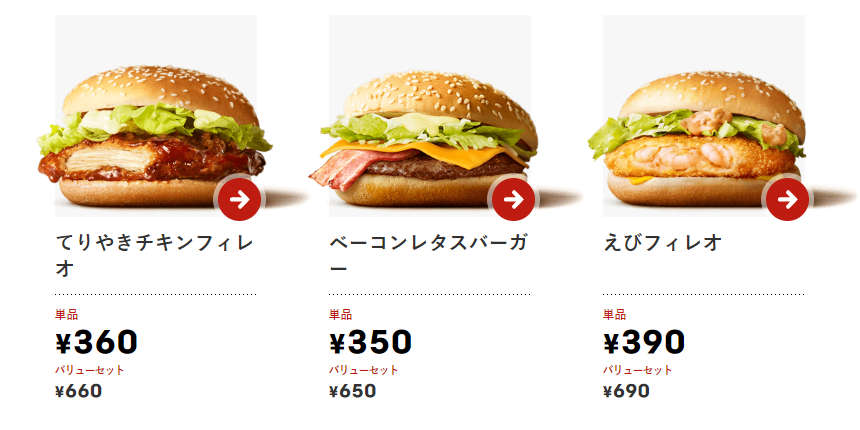
Additionally, portion size differences are clear to see when you compare drink sizes. In 2014, Buzzfeed compared McDonald’s cup sizes from around the world. In the screencap below, you can see how Japan’s Small, Medium, and Large cups compare to their US equivalents (represented by the white line above each cup).
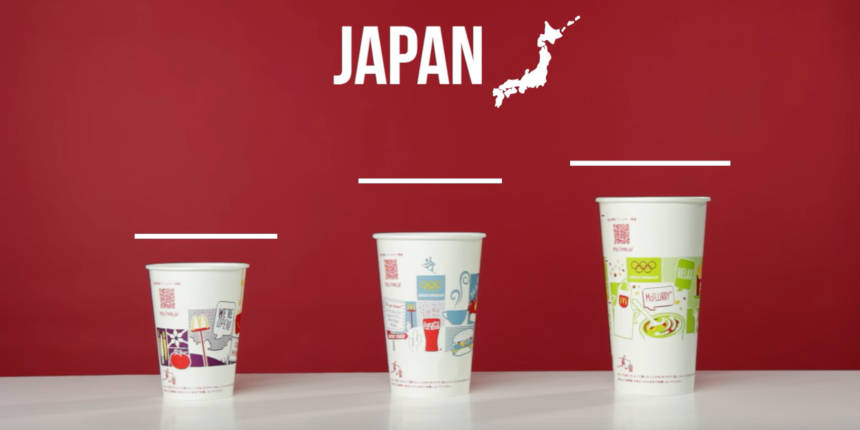
To put it into numbers, a Large cup in the US (30 oz) is 1.5x larger than a Large cup in Japan (20 oz). The gaps between these two sets of sizes illustrates just how variant portion sizing can be—even when the beverage is served up by the same brand each time.
This level of personalisation has made McDonald’s famous for their international menus and their ability to cater their food to the local masses. In fact, according to an analysis of posted social media images by Brandwatch, McDonald’s was ranked as one of the most visible brands in the world, with an average of almost 900,000 mentions every month on Twitter and Instagram:
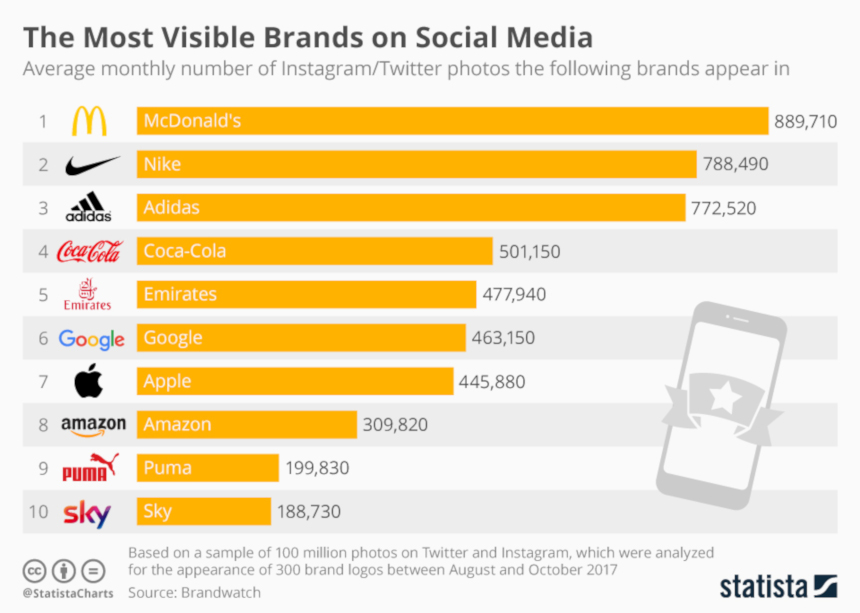
This implies is that people are willingly mentioning McDonald’s on their social media profiles or sharing their McDonald’s meals and experiences—ahead of other iconic global brands such as Nike, Adidas, and Coca-Cola. And the telling factor? A lot of these mentions come from tourists that travel across the globe knowing that a McDonald’s menu in the Japan will be vastly different from a menu in the US.
But think twice if you assume a brand’s reach is only as large as its main account. McDonald’s Japan has become the third-most tagged place on Facebook for “were here” check-ins, with upward linear growth. This includes status updates and photos that mention McDonald’s Japan, with a peak of 34.8 million mentions at the end of June 2019.
This figure actually eclipses the main McDonald’s account in terms of mentions, even though McDonald’s Japan has far fewer locations. General McDonald’s “were here” check-in counts were slightly below the McDonald’s Japan figure with 34.7 million mentions and a similar linear growth. But considering that Japan only has about 3,000 locations, its strong social foot-traffic truly demonstrates the power of having a fully functional localisation strategy in international markets.
The hype surrounding international menu items has also made it back to US domestic customers. As of June 2019, McDonald’s US decided to introduce their Worldwide Favorites Menu in the US, starting with the Stroopwafel McFlurry from the Netherlands and Cheesy Bacon Fries from Australia. It won’t be long before other QSRs follow suit.
Subscribe to our monthly newsletter.
Although personalisation and globalisation can sometimes seem to be little more than marketing buzzwords, it’s important to appreciate the real-world impact of strategies that incorporate both concepts at a scalable level. To be global in today’s world also means understanding the nuances associated with each local market—and its consumers—instead of replicating the same formula.
Want to know how to best execute your own local strategy on a national or even global scale? That just happens to be our area of expertise. Contact DAC today to chat goals, challenges, and laying the groundwork for growth in the age of globalisation.
Navigate an unpredictable landscape with actionable, data-driven strategies tailored for your business from the brand down to the local level.
Navigate an unpredictable landscape with actionable, data-driven strategies tailored for your business from the brand down to the local level.
Navigate an unpredictable landscape with actionable, data-driven strategies tailored for your business from the brand down to the local level.
Subscribe to our monthly newsletter.